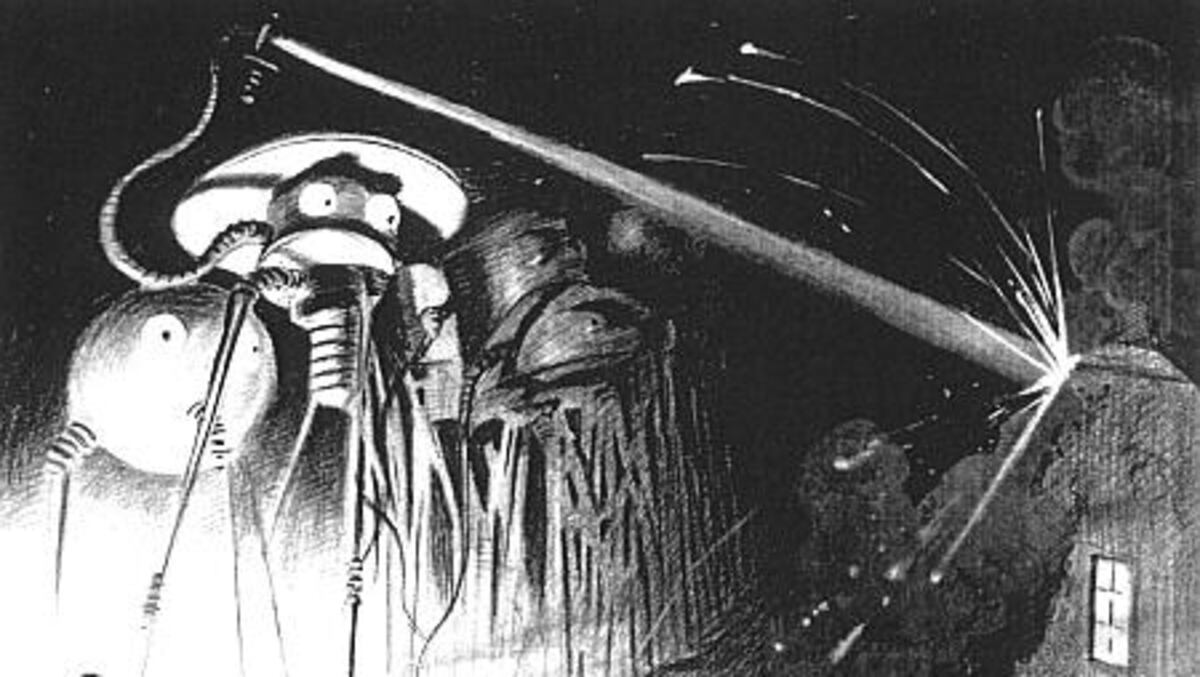The future of naval warfare arrived earlier this month when a U.S. Navy laser stationed aboard a ship shot down an aerial drone.
The amphibious transport dock Portland blasted the vehicle with a “Solid State Laser” prototype on May 16, the first at-sea test of the system, the Navy said in a Friday press release.
The Navy has been developing lasers and other directed-energy weapons since the 1960s.
Such weapons “are defined as electromagnetic systems capable of converting chemical or electrical energy to radiated energy and focusing it on a target, resulting in physical damage that degrades, neutralizes, defeats, or destroys an adversarial capability,” the release states.
Or in laymen’s terms: PEW PEW!
“With this new advanced capability, we are redefining war at sea for the Navy,” the Portland’s commanding officer, Capt. Karrey Sanders, said in the release.
The main benefit of using laser systems to defend U.S. warships would come in the western Pacific, where an increasingly assertive and capable China can churn out large quantities of missiles designed to overwhelm America’s pinpoint defenses.
Without a laser, U.S. warships might have to empty a magazine of anti-ballistic missiles to counter incoming waves of Chinese weapons, forcing a destroyer to rely on its gun or remove itself from the fight to reload its vertical launching system.
Defensive lasers would allow ships to save their missile tubes for offense.
RELATED

“You can save your missiles for longer-range issues, where you have to have the (defensive) missile or an offensive capability,” defense consultant and author Eric Wertheim told Navy Times last year.
The brass hopes to get to a point where such lasers can work in concert with optical dazzlers on board ships that would confuse drones, not incinerate them.
Such capabilities would be a “game changer” if developed and deployed, according to a 2018 Congressional Research Service report.
“Rarely has the Navy had so many potential new types of surface-ship air-defense weapons simultaneously available for development and potential deployment,” the report states.
While steep technological challenges remain, such advancements could be as big as the missile age of the 1950s and 1960s, and “at least as big as nuclear submarines,” Wertheim said.
“Directed energy has the ability to completely alter the way that navies fight,” Wertheim said.
In a way, the Navy has no choice but to develop and field this technology as fast as possible because potential enemies overseas will do the same thing, he said.
“This is not a problem that’s going away,” Wertheim said. “The expense of developing our naval assets is not a challenge that will be going away.”
Geoff is the managing editor of Military Times, but he still loves writing stories. He covered Iraq and Afghanistan extensively and was a reporter at the Chicago Tribune. He welcomes any and all kinds of tips at geoffz@militarytimes.com.




